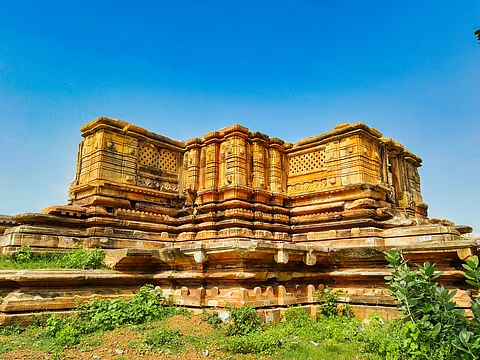
- Destinations
- Experiences
- Stay
- What's new
- Celebrating People
- Responsible Tourism
- CampaignsCampaigns
- SubscribeSubscribe
- Buy Now

The rich cultural and historical fold of Telangana is exemplified by the Kakatiya dynasty, which existed during the 12th and 14th centuries. The Kakatiyas gained popularity after first serving as vassals under the Rashtrakuta followed by the Kalyani Chalukya empires. They established an independent state that had a great impact on the socioeconomic and cultural landscape of the area. Both academics and tourists are still inspired and drawn to their legacy, which is demonstrated by the administrative changes and architectural wonders. The Kakatiya Trail unravels these secrets.
The fabled chieftain Durjaya is the ancestor of the Kakatiyas. Venna and his successors were among the first members of the dynasty to hold important positions in regional affairs, initially acting as feudatory chiefs under the Rashtrakutas. The Kalyani Chalukyas gave Beta I the chief of Anumakonda (present-day Hanamakonda) in the 11th century, which marked a change in strategy. The Kakatiyas' ascent to dominance was made possible by this action. The golden period of the dynasty was established by the further consolidation of their power by Prola II, the grandson of Beta I.
Kakatiya power peaked under the reigns of Ganapati Deva and his daughter Rudrama Devi. By focussing on maritime trade and bolstering the local economy, Ganapati Deva increased the kingdom's territory. His forward-thinking approach resulted in the integration of many populations into the governing structure, strengthening the Telugu-speaking population's sense of solidarity and common identity.
The dynasty's progressive views on gender roles are demonstrated by Rudrama Devi's rise to become one of the few female kings in Indian history. She maintained the stability of the kingdom by skilfully managing both external dangers and internal dissension. During her rule, the arts, literature, and architecture flourished, and she made major contributions to the building of temples and the growth of cities.
The Kakatiya period is well known for its unique architectural design, which includes elaborate carvings, platforms in the shape of stars, and temples built using sandbox technology. An example of this architectural genius is the Thousand Pillar Temple in Hanamakonda, which was built in the 12th century under the patronage of Rudra Deva. The temple's elaborate pillars and perforated screens, which are devoted to Hindu deities Shiva, Vishnu, and Surya, display the artists' painstaking workmanship.
The Ramappa Temple, sometimes called the Rudreshwara Temple, in Palampet is another outstanding accomplishment. Constructed during the reign of Ganapati Deva in the 13th century under the guidance of General Recharla Rudra, the temple is situated on a star-shaped platform that is six ft high. Its elaborate carvings and the use of floating bricks for the roof's construction demonstrate the time's sophisticated engineering methods. In recognition of the Ramappa Temple's exceptional global importance, UNESCO designated it a World Heritage Site in 2021.
The dynasty's capital fortress, Warangal Fort, is a testament to the Kakatiyas' architectural and strategic skill. Originally used as entrances to a large Shiva temple, the fort's four decorative gates are called Kakatiya Kala Thoranam. The depth of Telangana's history and cultural diversity are symbolised by these arches, which have come to represent the state's legacy.
By splitting the kingdom up into different units run by designated officials, the Kakatiyas established a decentralised administration structure. Effective resource management and governance were made possible by this structure. In order to facilitate irrigation in the semi-arid area, they built a large number of reservoirs and tanks and supported agrarian reforms. The dynasty's enduring influence on sustainable agriculture is demonstrated by the fact that many of these water bodies, which were constructed with cutting-edge methods, now benefit nearby populations.
As the Delhi Sultanate, led by Alauddin Khalji, attempted to extend southward, difficulties arose in the early 14th century. The siege of Warangal in 1323 was the result of multiple attacks against the Kakatiyas, despite their initial resistance. The dynasty's decline was caused by the capture of Prataparudra II, the final notable Kakatiya emperor. Nonetheless, the administrative structures and cultural advancements they established had an impact on later regional empires such as the Vijayanagara Empire and the Musunuri Nayakas.
The ruins of Kakatiya urban design and architecture still evoke wonder today. Scholars, historians, and visitors are drawn to sites like the Thousand Pillar Temple, Ramappa Temple, and Warangal Fort because they provide a window into a society that skilfully combines creative brilliance with practical business sense. As a reminder of Telangana's rich history, the Kakatiya dynasty's emphasis on cultural patronage, infrastructure development, and inclusivity has permanently altered the state's identity.
